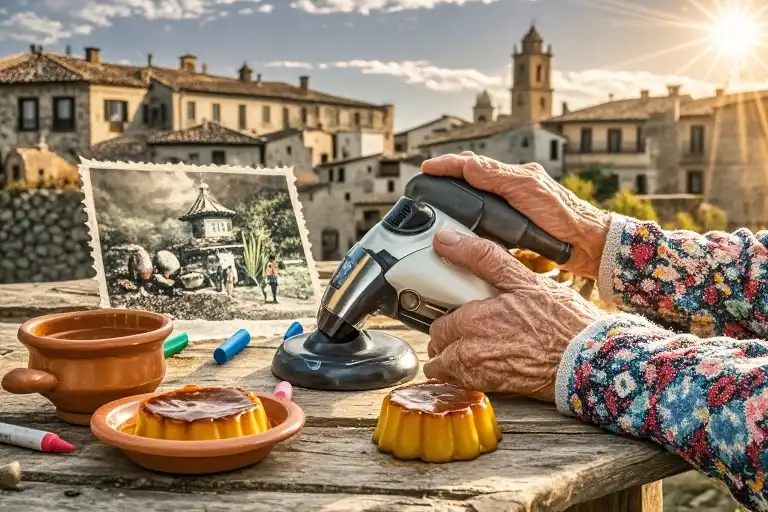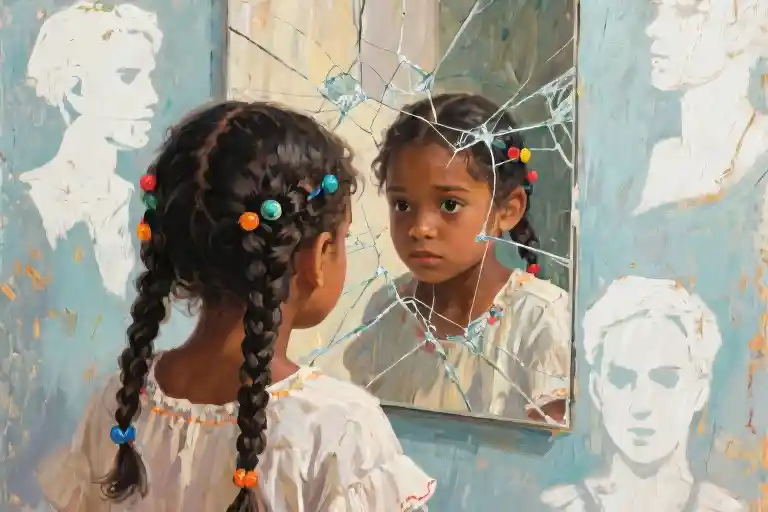The plastic nozzle felt unexpectedly heavy in Tía Pili’s gnarled hands. As she rotated the vacuum cleaner attachment like a sacred relic, the patio’s lunchtime symphony continued around us – children’s laughter bouncing off terracotta tiles, the metallic clink of forks against paella pans, the sticky-sweet aroma of freshly baked tarta de Santiago mingling with woodsmoke from the barbecue.
“Entonces, tu casa debe estar muy sucia, ¿no Natalie?” Her question sliced through the August heat like the lemon wedge she’d squeezed into her sangria earlier.
I nearly choked on my caramel flan.
This wasn’t how I imagined my first anthropological field study would begin. When my university friend Carlos invited me to his grandmother’s 82nd birthday in Castilla-La Mancha, he’d described it as “authentic rural Spain.” He failed to mention I’d be the only Black woman within 50 kilometers of the village’s single church tower.
The barbecue pit sizzled with more than just chorizo. Of the village’s 123 inhabitants (I’d counted during the three-hour lunch), every wrinkled face around the long wooden table shared Carlos’ distinctive nose shape. Even the roaming chickens seemed more integrated than me.
Tía Pili’s eyes sparkled with the particular mischief of someone who’d survived both the Spanish Civil War and raising thirteen children under Franco’s regime. She patted the empty chair beside her, its wicker creaking like an old storyteller clearing their throat.
“Come, mi niña africana. Let me explain vacuum cleaners and village logic.”
What unfolded over caramel-sticky plates was a masterclass in cultural anthropology. The nozzle in her arthritic hands became our Rosetta Stone – a bridge between her world of Franco-era austerity and my modern multicultural identity.
“Mira,” she traced the attachment’s ridges, “we used to beat rugs with sticks. Now? This magic machine sucks up dust like duendes stealing crumbs!” Her laughter lines deepened. “But some stains… some stains even technology can’t erase.”
Her calloused finger tapped my forearm, darker than the cured jamón resting on its wooden stand nearby. The unspoken hovered between us like the fig tree’s shadow creeping across the patio.
Through flan-sweetened stories, Tía Pili painted generations of Spanish history:
- Women scrubbing doorsteps with vinegar during postwar rationing
- The village’s first radio arriving in 1969 (“We thought the Beatles were aliens!”)
- Her secret recipe for migas using bread three days stale
The vacuum cleaner’s cord snaked between us like a timeline connecting past to present. When she casually mentioned her eldest son’s emigration to Germany (“Better than eating dirt here”), I realized this wasn’t just abuela’s ramblings – it was living oral history, preserved like the village’s 16th-century baptismal font.
As sunset painted the sierra mountains gold, our conversation turned to deeper stains. The ones left by:
- Dictatorship-era poverty still visible in cracked plaster walls
- EU subsidies that brought WiFi but erased traditional farming
- A well-meaning but awkward generational divide symbolized by that damned vacuum nozzle
“Los jóvenes think everything can be cleaned up quick,” Tía Pili winked, handing me another slice of flan. “But real life leaves marks. Like good vino tinto on a tablecloth.”
When I finally mustered the courage to ask about her earlier comment, she simply gestured to the children drawing with crayons on paper napkins. “They’ll understand better than us. Maybe your children will visit my great-grandchildren’s birthday?”
The vacuum cleaner now sits in my London flat, its nozzle permanently smudged with Castilla-La Mancha’s red dust. Sometimes, when I’m battling city grime, I imagine Tía Pili’s laughter in the machine’s hum – a reminder that cultural understanding isn’t about erasing differences, but appreciating the patterns they leave behind.


